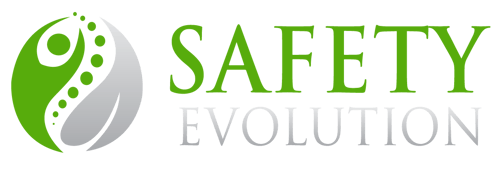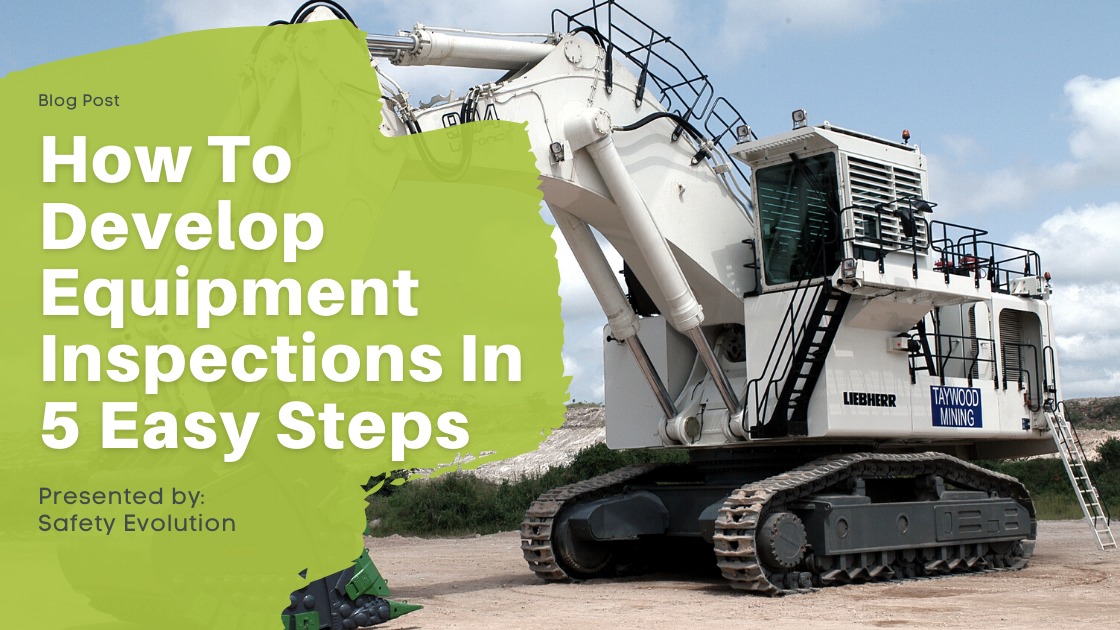Your company’s Preventative Maintenance Program is a key component for business success. Preventative maintenance is just that…preventative. Stopping breakdowns or equipment-related injuries before they happen!
Regular equipment inspections play a big role! So, where do you start? How do you ensure that inspection forms contain the critical information and that they are being completed as required? Where will you find guidelines for content? Oh no! MORE PAPERWORK!!!!
Before you throw up your hands, let's look at the “Pros” over the “Cons”. The benefits far outweigh the drawbacks! In this article, we will make the case for well-developed equipment inspections and give you some great pointers on how to develop and implement them at your workplace!
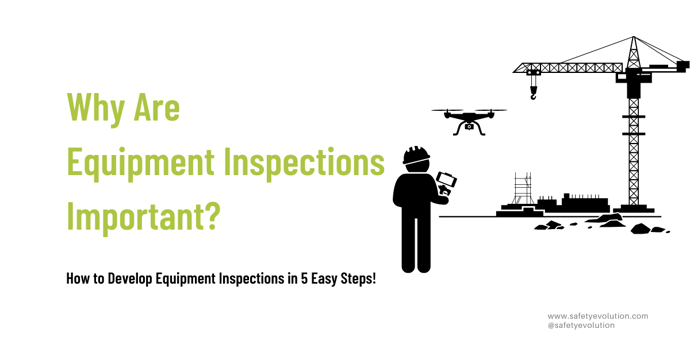
Why Are Equipment Inspections Important?
As a safety professional, you know that preventative maintenance and inspections are a requirement of OH&S legislation in most jurisdictions. Damaged or broken equipment requires immediate repair to prevent problems. According to OSHA, all heavy equipment must have, at a minimum, the following:
- A working brake system, including emergency brake and parking brake
- Working headlights, taillights, and brake lights
- An audible warning device, like a horn
- A windshield and windshield wipers in good condition
OH&S Legislation looks at inspections and maintenance from the perspective of workplace safety. A preventative maintenance program shows due diligence from the safety side. Equipment-related injuries are far less likely when workers consistently complete pre-use inspections. Get your workers into the habit of inspections!
Here’s why:
- Workers feel safer operating the equipment.
- The value that your company places on its assets ( both people and equipment) often determines the way that your equipment is operated.
Staying compliant by doing the minimum is not the goal. The equipment operated by your company represents a significant investment…one that warrants regular inspections and maintenance to keep ahead of the game and prevent the trouble and expense of major equipment failure. By developing comprehensive inspections and ensuring that they are done in a timely manner, you can sidestep the top reasons for equipment breakdowns.
- Poor maintenance
- Poor electrical connections
- Not replacing worn parts
- Ignoring warning signals
Regular equipment Inspections catch these issues!
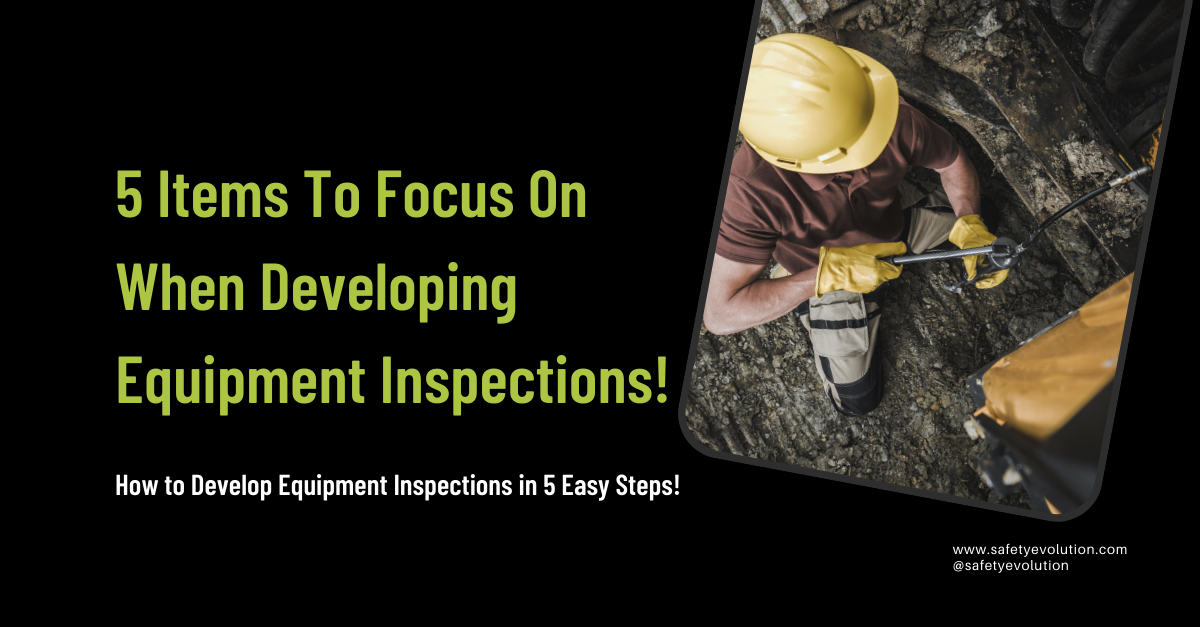
5 Items to Focus On When Developing Equipment Inspections
-
Manufactures Recommendations
-
Frequency of Inspection
-
Who is the Inspecting the Equipment?
-
Keep the Equipment Inspection Simple
-
Corrective Action System
Manufactures Recommendations
The manufacturer will give you the recommendation of what needs to be checked. They usually have a handy list that you can use to create your equipment inspection. They will break out the different types of inspections that are required and are normally based on usage.
Frequency of Inspection
This can include pre-use, daily, or weekly, or they may have hours or milage as a determining factor. When you are planning your equipment inspection process, follow the manufacturer’s specifications. It is also important to remember that your legislative body may require you to perform inspections at intervals that are different from the manufacturer. Remember to check your safety program, legislation, and the manufacturer to set up this.
Who is Inspecting the Equipment?
We don’t want to be asking the equipment operators or workers to answer questions they don’t know how to answer. There are two things that you need to do that will ensure the people performing the inspection are trained and know what to look for. The first is to get input from your team on what the operator or driver should know and what the mechanical staff would look after. Use this information to develop training for each position. This will set up each new employee for success and help ensure that unsafe equipment is not in operation. Check out our blog Get The Superstars Of Tomorrow Using New Employees Training to assist in setting this up!
Keep the Equipment Inspection Simple
It is important to keep the inspection simple. We see massive inspections that have over 100 questions needing to be answered. This is too much for your team to be expected to go through. Inspections need to be specific to the equipment. They also need to be specific to the type of inspection being done. One of the common issues with inspections is that they have the pre-use, daily, weekly and monthly all combined into one form. Each of these should be broken out into a single inspection form.
Corrective Action System
The final step is the follow-up of corrective actions. We need to make sure that we have a strong system for tracking and documenting the action items created in the equipment inspection process. How will they be shared with the people that need to fix the problems? How will we make sure that we do not put the equipment to work that is not safe? This is also one of the most administratively heavy processes. The expert tip is to get software that automates this process like Safety Evolution! More information on this at the end of the blog!
What Are The Benefits Of Equipment Inspections?
The condition and appearance of your company’s equipment on job sites and public roads says a lot about your company values. Well-maintained equipment speaks volumes! It creates the perception of a company that cares about safety and productivity.
As we have mentioned in previous blogs, productivity and safety go hand in hand. Including your supervisors and workers in the inspection process is just one more way to sharpen the blade of that two-edged “Safety/Productivity” sword!
Remember, safety in the workplace is everyone’s responsibility! Providing the inspection tool keeps operators connected to their equipment, improves safety awareness, and increases productivity! Now that’s a WIN-WIN!
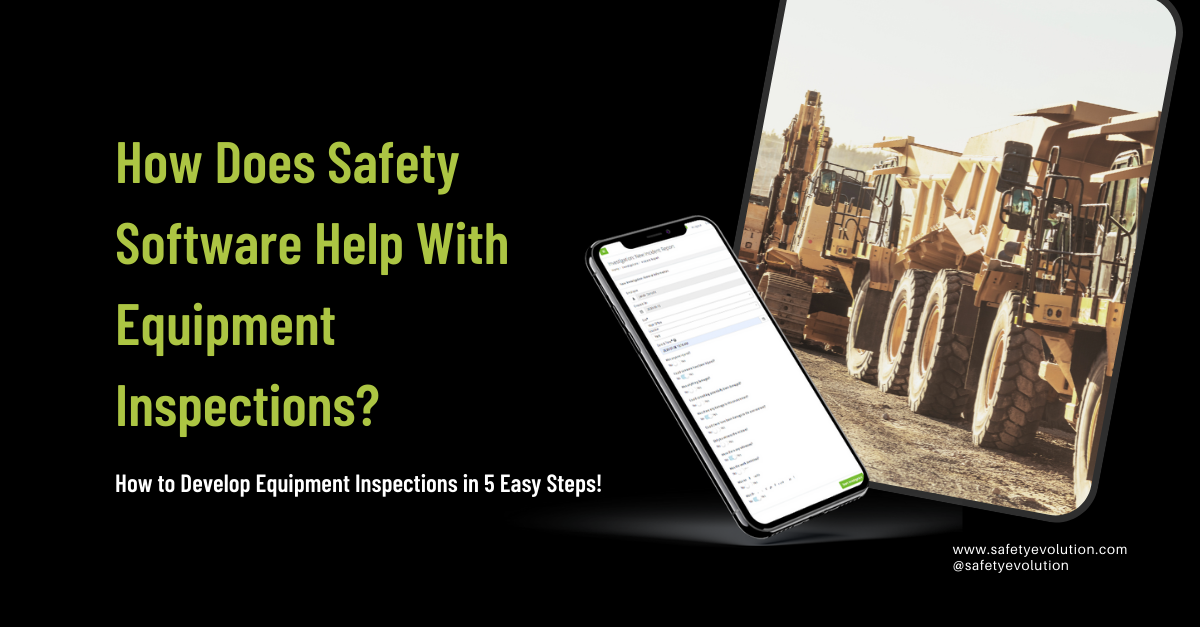
How Does Safety Software Help With Equipment Inspections?
Let’s look at how safety software moves you away from the admin-heavy part of the paper-based Inspection process. AND…no more scrambling to find those inspection forms stuffed into coveralls or truck consoles!
At Safety Evolution, our safety software provides the platform for building, completing, retaining, and reviewing Equipment inspections. Equipment operators or mechanics can easily access and fill out an inspection form from a tablet or phone. The software creates a corrective action alert when a deficiency is noted on the inspection form and seamlessly tracks the corrective action to completion.
In the software, the inspections and assets are connected so that past inspections, for each piece of equipment, can be easily viewed from your Safety Evolution dashboard.
To ensure that annual or quarterly inspections are never forgotten, the Safety Evolution software sends out pre-programmed alerts to remind an employee of the upcoming inspection dates.
If Preventative Maintenance and Inspections are one of your safety Pain Points, check out our Demo on Demand Series to see how safety evolution can help!
Sign up to receive our weekly newsletter with helpful safety content below!
